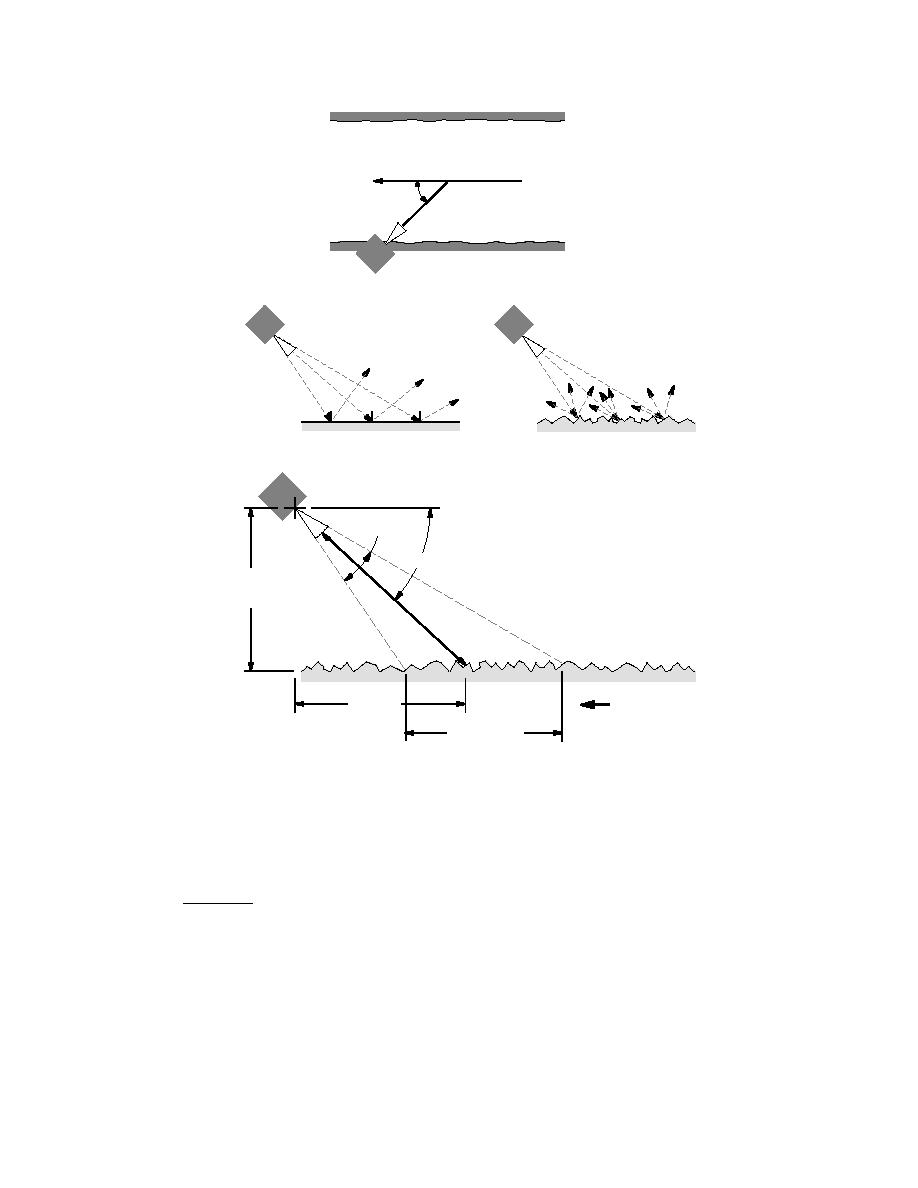
River Flow Direction
α
Radar
Radar
Radar
Smooth Surface
Rough Surface
Radar
θ
β
Height
above
Target
Bo
r
es
ig
ht
Stand Off
Moving Ice
3 dB Footprint
Figure 1. The effect of surface roughness on radar backscatter, and defining
terms and parameters.
masses on large bodies of water. The backscat-
An ideal reflector returns all incident energy back
tered power received Pr (W) is related to system
to the source, corresponding to a σo of 1. The
and target parameters as
radar cross section of a target is defined as the
PtG2λ2 Aσo
normalized area of an ideal reflector that would
Pr =
(1)
,
return the same signal strength as the target. Sev-
(4π)3 R4L
eral factors affect the radar cross section of a
given target, including transmitted wavelength,
where Pt = power transmitted (W)
target geometry, aspect, and reflectivity. A cali-
brated radar system is necessary to measure σo
λ = radar wavelength (m)
A = area illuminated by the radar (m2)
for various target conditions. Moving river ice
presents an inhomogeneous target with complex
R = range to the target (m)
σo = normalized cross section of the tar-
and variable geometry, and the radar cross sec-
tion can vary widely.
get
An additional requirement for Doppler veloc-
L = system losses.
2



 Previous Page
Previous Page
